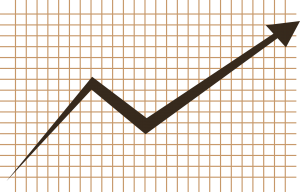Asteria Lending Inc. Unit 306 3/F 6762 National Life Insurance Bldg. San Lorenzo, Ayala Ave. Makati City
We’re Open: Mondays – Fridays
Office Hours:
9:00 am – 7:00 pm
Email:
[email protected]


According to a study recently released by the McKinsey Global Institute (MGI), Philippine is one of the few emerging global market economies that has been projected to have a well-sustainable strategy to that will prepare the country to sustain a substantial growth over the next 10 years. According to the report, the Philippines is one of the countries that will attain sustainable growth over the next decade only of corruption, inflation, and political uprisings are prevented from hampering such positive projections.
It is believed that most emerging markets like the Philippines are grappling with sustaining their growth in the next couple of decades, and only 18 out of the total 71 countries, studied by the MGI were able to attain a certain benchmark set by the organization. One of the benchmarks set for emerging markets is the sustenance of a 3.5% per capita growth, over the next 50 years, or 5% growth over the next 20 years- this projection is believed to be capable of pushing millions of people out of poverty.
Aside from the Philippines, other countries that made the list of emerging economies that will sustain their growths in the next 10 years are; Malaysia, China, Ethiopia, Vietnam, India, and Uzbekistan.
Not that Philippine was not achieving some growth before now, perhaps the successes achieved from the 1960s were interrupted by the sharp rise in corruption, inflation, and socioeconomic revolutions.
Despite all these challenges, the Philippine economy has shown some high resilience and at some point, it overtook the economy of China. By the end of the year 2017, the economy had grown by more than 6.9% in September (the third quarter) and that was the highest growth since the fourth quarter of 2016, this growth is slightly higher than the third quarter annual growth of the Chinese economy around the same time (The Chinese economy grew by 6.8% in the third quarter of the year 2017), and that was the weakest growth in the Chinese economy since the fourth quarter of 2016, while the Philippine economy was still growing at roughly 6%. It is believed that the Philippine will sustain this growth rate beyond the end of the last quarter of 2018.
Thanks to some growth-enhancement policies implemented by the current government, the economy of Philippine has been greatly enhanced, these policies include positive tax reforms, an excellent investment in infrastructural growth, and smart market liberalization – all these have created a stable macroeconomic atmosphere for more foreign investment and growth in local economic activities.
The positive economic reforms of the Duterte administration could be the reason why the MGI study had included the Philippine in the lists of countries expected to achieve sustainable growth over the next decade.
Countries like Sri Lanka have similar growth projection to the Philippine and provided issues such as corruption, inflation, and socio-economic revolution do not meddle in the growth process and cut short of the gains made by the countries on the list.
The projected increase in economic growth for the Philippine has created some element of skepticism in the financial markets – the market trends seem to support the MGI projection on the economy of the Philippine.